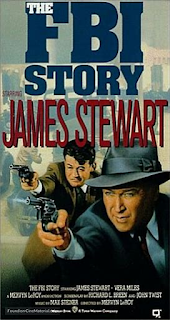October 26, 2023
Troy D. Smith
“How America’s Bloodiest Forgotten War Affected Slavery”
Last week I talked
about how slavery started in the English colonies, and the fact that for much
of the 1600s plantation labor was done by three groups -African slaves, white
indentured servants, and American Indian captives/slaves -who not only worked
closely together in the fields, but who learned from one another, interacted
socially, and often intermarried. By about 1720, that had changed.
The widespread use
of indentured servants on plantations ended after Bacon’s Rebellion (1676). If
you recall from earlier columns, in the early 1600s most of those white
indentured servants had not lived to the end of their seven-year contracts, due
to disease, hardship, and Indian wars. By the late 1600s conditions had
improved, and most of them did survive. Which meant that, suddenly, there were
large numbers of free, unemployed, landless poor whites who now wanted the land
they had been promised, and it was mostly already taken. This led to an armed
uprising of -not only angry landless whites -but also angry landless free
blacks who wanted the same thing. The rebels actually burned Jamestown to the
ground. After that, it no longer seemed like a good idea to planters to import
large numbers of indentured servants from Europe. The war also led authorities
in Virginia -and soon in other Southern colonies -to start passing laws meant
to prevent poor white and black workers from teaming up again. Interracial
marriage was made illegal, and free blacks found their rights being whittled
away to insert a wedge between the two groups.
After that, then,
most of the plantation labor was done by African and Native American slaves.
The latter were still being used extensively -in 1700, there were more Indian
slaves than black ones in Charleston, South Carolina (the colony with the most
slaves overall). From the mid-1650s to the early 1700s, the English had been at
the heart of a massive Indian slave trade in the Southern colonies -the same
situation that Europeans had exacerbated in West Africa. At first, English
authorities and planters would buy extra captives taken by Indians raiding
enemy tribes, but eventually the royal governor of South Carolina actually made
contracts with certain tribes (and helped arm them), such as the Westo and the
Shawnee, to provide slaves to planters. These tribes then made perpetual war on
everyone around them, actually wiping out many of the tribes in northern
Florida. Again, as with West Africa, this resulted in social chaos.
Incidentally, most
of the founders of the Carolina colony were second or third sons of wealthy
plantation owners in the English colonies of Barbados, the Bahamas, and
Jamaica. They couldn’t inherit their fathers’ estates, so they set up a new
colony -and brought with them the much harsher, deadlier slavery practices
common in the Caribbean. The South Carolinians operated lucrative rice
plantations, which required far more workers than tobacco did.
The Indians
figured out that it was against the best interests of all the tribes to be set
against each other in the slave trade, so in 1712 virtually all the tribes in
the Southeast (except the Cherokees, who tended to stay isolated) stopped
raiding each other and decided to wipe out the English colonists of South
Carolina instead. In the Yamasee War, so named for one of the leading tribes,
they almost succeeded. Only the fact that the English persuaded the Cherokees
to come in on their side turned the tide and saved the colony.
After that,
enslaving Indians also seemed like a bad idea. After all, if an African slave
escaped he would have no idea where he was, whereas Indians knew the area.
Africans were hardier than Indians, who lacked resistance to many diseases.
Most importantly, an African slave did not have large numbers of heavily armed
friends and neighbors living right down the road. Slavery became an exclusively
African experience in the colonies -and laws increasingly reflected that.
--Troy D.
Smith, a White County native, is a novelist and a history professor at
Tennessee Tech. His words do not necessarily represent TTU.
Buy the book A Liberal Dose: Communiques from the Holler by Troy D. Smith HERE
You can find all previous entries in this weekly column HERE
A list of other historical essays that have appeared on this blog can be found HERE
Author's website: www.troyduanesmith.com
The author's historical lectures on youtube can be found HERE





























